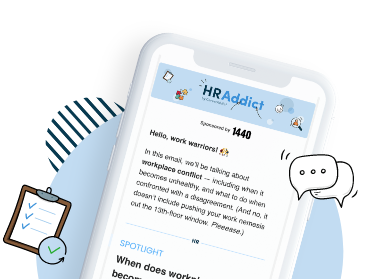This is an expert guest post by Victoria Greywing from Movavi.
Training methods at work have raced far beyond binders and slide decks. Employees now stream lessons on their phones between meetings, and managers track learning dashboards as closely as sales forecasts.
Video learning holds center stage because it "shows" rather than tells, and it can travel anywhere bandwidth exists. However, simply filming isn't always inspiring enough to drive results.
So, what turns moving images into a true engine for change?
TABLE OF CONTENTS
Courses for employees: use & benefits
A corporate course exists to close the distance between current skills and required performance. A well-crafted corporate video for training gives autonomy: people can pause, rewind, or speed-watch according to prior knowledge— something impossible in a fixed classroom.
They also help pass down expertise that’s hard to find. One senior technician can record a delicate calibration eliminate the need for 50 live walkthroughs. Because the same clip can be used in multiple offices, consistent practice will follow until everyone masters the skills required.
Finally, seeing real colleagues performing demonstrations creates familiarity, so the learning experience will feel more relatable and personal rather than corporate.
But beyond immediate task competence, well-designed courses also reinforce identity. People who feel the organization invests in them report higher loyalty, shrinking turnover costs that silently drain profit. As LinkedIn’s Workforce Report proves, 94% of employees agree they stay longer in a company that invests in their L&D.
In exit interviews, 17.4% of workers cite lack of growth as their reason for leaving, even before mentioning pay or employee benefits. A vibrant library of training video playlists can counter that narrative by signaling long-term partnerships.
Moreover, video archives capture legacy know-how before retirements erase them from memory. They can be living references that new recruits can consult when senior mentors aren’t available.
For global teams operating across time zones, asynchronous access can close the distance. The same training videos for employees in Manila can be used in Madrid to talk about lessons on best practices overnight, facilitating flexibility and faster dissemination of information.
Why is video training for employees important?
Competition never rests, regulations evolve, and products refresh on quarterly cycles. Teams that stop learning freeze in place while markets move and grow.
Structured learning protects three pillars:
- Competence: targeted tutorials keep skills ahead of demand, preventing incompetent work output that can impact the company’s margin.
- Compliance: interactive scenarios about data-privacy laws or anti-harassment policies can shield the brand against fines and scandal.
- Culture: videos modelling inclusive leadership or safe escalation can help set workplace culture norms others need to emulate.
Ignoring development carries an invisible tax: outdated methods will propagate, security gaps will widen, and top performers may leave to find workplaces that care. In heavily regulated sectors, a single missed update can trigger penalties larger than the annual learning budget.
This is why making space for regular, instructional refreshers becomes a risk-management tool as much as a growth lever. Leaders who block short windows for video-based micro-learning are models of commitment from the top and help normalize continuous improvement across every job role.
Metrics training affects—and how
Executives mostly only fund what they can measure, so leaders must tie the use of media to hard numbers. Training videos for employees can move several dials when instrumented correctly:
- Time to productivity. Interactive onboarding playlists composed of short segments enable new staff to reach independent output days—sometimes weeks—sooner.
- First-pass quality. Screen-captured lessons embedded in live software will reduce mistakes and erroneous entries, increasing accuracy in operations.
- Support tickets. Self-service libraries deflect repetitive “How do I export this report?” queries, freeing specialists for deeper work.
- Audit readiness. Data on training completion and quiz scores can be reflected faster on HR platforms, giving auditors the information they need within minutes instead of days.
- Engagement. Visual training and post-course surveys invite engagement; engaged people stay longer and advocate louder.
- Revenue. Sales reps who rehearse product demos in realistic simulations hit their quotas earlier, while factory crews trained properly on safety clips help limit costly disruptions in workflows.
The elements of effective training videos
A successful module resembles a layered recipe, not a single ingredient. There can't be one formula that works for all. However, specific factors contribute to creating a good training video that does the job:
1. Crystal-clear objective and relevance
Every training video begins with a single, actionable promise — “After a couple of minutes, you’ll complete this step easily.” Stating the purpose aligns attention and gives the learner a built-in checklist to guide success.
Whether it’s sustainability in the workspace, a new software application, or a team-building exercise, the objective should be clear from the start.
2. Narrative structure that directs attention
Viewers remember stories, not slides. Even brief security or safety training videos can benefit from a three-beat arc: context, challenge, resolution. In practice, this could be a workaround for a software bug that threatens deadlines or a real-time troubleshooting demonstration.
3. Script designed for the ears and the eyes
Good instructional writing sounds like a mentor at your desk—short sentences, active verbs, zero jargon. On screen, this translates to easy-to-read bullet points that match the dialogue and visuals. Keep them simple, but not simplistic.
4. Visual grammar and brand cohesion
Consistent fonts, high-contrast colorways, and subtle animated highlights guide the eye without distraction. Brand elements—logo, icons, motion style—should whisper, not shout, to reinforce credibility while allowing content to shine.
A steady framing of hands-on tools or cursor paths on dashboards keeps focus on “what needs to be done,” and not the presenter’s hairstyle.
5. Audio that earns trust
Learners forgive grainy footage faster than muffled speech. A quiet room, pop filters, and a free USB mic will easily outperform a 4K camera paired with poor-quality laptop audio.
Sound beds and light transitions in any free video editor can soften edits, but restraint matters; the soundtrack should support the content, not compete with it. Don’t forget to test your mix on phone speakers because that’s where many corporate audiences listen.
6. Interactive moments that turn watching into doing
Click-to-choose branches, hotspot reveals, and quick drag-and-drop activities force micro-decisions that convert passive viewing into active practice. Even a single checkpoint embedded through your learning management system (LMS) can help raise engagement dramatically.
When you create new training videos with interactivity, publish shorter entries so learners can explore what-if paths without the fear of failing a high-stakes quiz.
7. Embedded assessment tied to real work
A post-module challenge should mirror the workplace task: finish a refund in the live sandbox, complete a safety inspection in the mobile app, or record a mock pitch.
By capturing evidence in line with the lesson, you translate knowledge into observable competence, producing data that leaders care about. Mini rubrics shared in advance can also help to further clarify expectations and speed up self-correction.
8. Accessibility baked in, not bolted on
Closed captions, keyboard-friendly navigation, and color-blind-safe palettes can widen reach and satisfy compliance requirements. These also let multitaskers skim silently on crowded trains or archive screenshots for quick reference.
9. Analytics loops and content governance
Modern learning platforms can reveal average watch time, replay spikes, and quiz statistics. Reviewing these signals monthly will tell you where learners rewind or bail out, giving you data you can use to revise and improve content in the future.
Tag each video with the creator’s name and a “review-by” date so nothing ages into misinformation when policy, product, or branding changes.
10. Localization and cultural nuance
Global businesses thrive when examples and metaphors feel native. Swap dollar references for euros, update subtitles with the local language, and re-record voiceovers with regionally trusted accents.
These tweaks are inexpensive compared to producing entirely new tutorials and will show cultural respect that can enhance engagement while facilitating knowledge transfer.
Keeping individual videos short—under six minutes, where possible—respects employee time and will make it easier to update content when policy or product shifts. Such brevity also means a learner can revisit a specific instructional moment minutes before performing the task at hand.
Maintaining and updating the library
Training content ages like produce, not like wine. Schedule quarterly audits where subject-matter experts watch older samples and flag obsolete data, broken links, or policy shifts.
Automate reminders through HR platforms so nothing sits unchanged longer than a year. Making small, incremental fixes keeps credibility high because learners may quickly spot outdated references and assume the rest of the content is no longer reliable.
Aim for continuous gardening instead of occasional overhauls. This is more cost-efficient and avoids the hassle of last-minute compliance scrambles.
When producing annual strategy updates, integrate forthcoming policy shifts into scripts weeks before launch to avoid frantic patchwork once the news lands. This will not only save editing costs but also show professionalism and competence.
Best examples of effective corporate training videos
Abstract theory lands better with concrete samples. These three corporate training video examples do it best:
1. Burger King
Bringing in rap legend Snoop Dogg to train the employees on how to make delicious hot dogs? That's how you can tell the brand is committed to providing a one-of-a-kind and engaging lesson for its employees.
2. Vyond
Vyond's “Mental Health in the Workplace” animated series is a prime example of how organizations can use innovative and creative ways to educate their employees on important topics. The video talks about mental health in the workplace and provides tips for adopting a healthy work-life balance.
3. Deloitte
Ever wondered why the company rejected your application? Deloitte explains it in their own example. The video “Will you fit into deloitte?” featuring a day in the life of a Deloitte employee highlights the essential qualities the company looks for in candidates.
Final thoughts
Effective training videos stand on three legs: sharp purpose, engaging craft, and honest measurement. Glossy footage alone cannot replace clear objectives, nor can advanced dashboards rescue a muddled story. Treat each module like a product—discover, design, produce, release, improve—and your library will become a perpetual mentor instead of a dusty archive.
Cost is rarely an obstacle; empathy and discipline matter more. When every employee training video answers a real business need, learning stops being a chore and instead becomes an activity everyone looks forward to.

